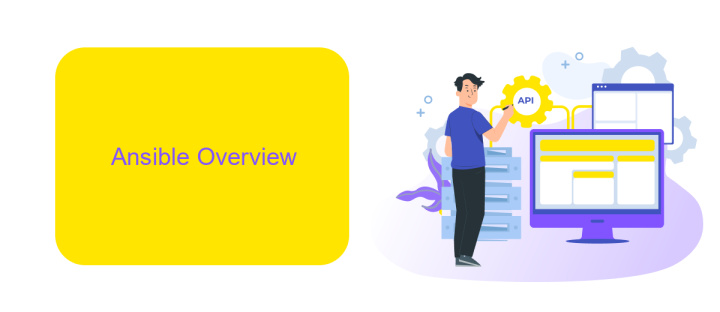Ansible Vs UiPath
In the rapidly evolving landscape of automation, Ansible and UiPath have emerged as leading solutions, each catering to distinct needs. Ansible excels in IT automation and configuration management, streamlining complex workflows for developers and system administrators. UiPath, on the other hand, shines in robotic process automation (RPA), enabling businesses to automate repetitive tasks with ease. This article delves into their unique features and use cases.
Introduction
In today's rapidly evolving technological landscape, businesses are increasingly leveraging automation tools to streamline their operations and enhance productivity. Two prominent players in the automation domain are Ansible and UiPath. While both tools aim to simplify complex processes, they cater to different aspects of automation, each with its unique strengths and applications.
- Ansible is an open-source automation tool primarily used for IT tasks such as configuration management, application deployment, and server provisioning.
- UiPath is a leading Robotic Process Automation (RPA) platform designed to automate repetitive, rule-based tasks typically performed by humans in a business environment.
Understanding the key differences between Ansible and UiPath is crucial for organizations aiming to implement automation solutions effectively. In this article, we will explore the core functionalities, use cases, and benefits of each tool, helping you make an informed decision on which platform best suits your automation needs.
Ansible Overview

Ansible is an open-source automation platform that simplifies the management and configuration of IT infrastructure. It uses a simple, human-readable language called YAML to define automation tasks, making it accessible to both developers and system administrators. Ansible is agentless, which means it doesn't require any software to be installed on the target machines, reducing overhead and simplifying deployment. It excels in tasks like configuration management, application deployment, and orchestration, allowing teams to automate repetitive tasks and focus on more strategic initiatives.
One of the standout features of Ansible is its ability to integrate seamlessly with various services and platforms. For instance, ApiX-Drive can be used to set up integrations between Ansible and other tools, streamlining workflows and ensuring data consistency across systems. This capability makes Ansible a versatile choice for organizations looking to enhance their automation strategies without the need for complex scripting or extensive manual intervention. By leveraging Ansible, businesses can achieve greater efficiency, reliability, and scalability in their IT operations.
UiPath Overview

UiPath is a leading Robotic Process Automation (RPA) tool that enables businesses to automate repetitive tasks, thereby increasing efficiency and reducing human error. Its user-friendly interface and extensive range of features make it accessible to both technical and non-technical users. UiPath supports various types of automation, including desktop, web, and Citrix, making it versatile for different business needs.
- Drag-and-drop workflow design: UiPath Studio offers a visual design interface where users can create automation workflows using drag-and-drop activities.
- Advanced analytics: UiPath Insights provides real-time analytics and dashboards to monitor and optimize automation performance.
- Integration capabilities: UiPath seamlessly integrates with other applications and services, including ApiX-Drive, which facilitates easy connection to various third-party systems.
- Scalability: UiPath Orchestrator allows businesses to manage, schedule, and monitor their automated processes across multiple machines and environments.
Overall, UiPath offers a comprehensive solution for businesses looking to streamline their operations through automation. With its robust features and integration capabilities, including services like ApiX-Drive, UiPath is well-suited for organizations aiming to enhance productivity and achieve digital transformation.
Comparison

Ansible and UiPath are both powerful automation tools, but they serve different purposes and excel in distinct areas. Ansible is an open-source automation platform primarily used for IT tasks such as configuration management, application deployment, and task automation. It leverages simple, human-readable YAML files to define automation jobs, making it accessible for IT professionals.
UiPath, on the other hand, is a leading Robotic Process Automation (RPA) tool designed to automate repetitive business processes. It provides a user-friendly interface that allows users to create automation workflows without extensive programming knowledge. UiPath is particularly popular in industries like finance, healthcare, and customer service for automating data entry, report generation, and other routine tasks.
- Ansible focuses on IT automation and infrastructure management.
- UiPath specializes in automating business processes and workflows.
- Ansible uses YAML for defining tasks, while UiPath offers a visual workflow designer.
- Both tools can be integrated with other systems using services like ApiX-Drive for seamless automation.
In summary, while Ansible is ideal for IT professionals looking to streamline their infrastructure management, UiPath is best suited for business users aiming to automate repetitive tasks. Choosing between the two depends on the specific needs and expertise of your team. For enhanced integration capabilities, services like ApiX-Drive can be utilized to connect Ansible and UiPath with various other platforms, ensuring a smooth and cohesive automation experience.
Conclusion
In conclusion, both Ansible and UiPath offer robust solutions for automation, but they cater to different needs and environments. Ansible excels in IT automation, configuration management, and orchestration, making it ideal for DevOps teams and system administrators. Its agentless architecture and extensive module library simplify the automation of complex IT tasks.
On the other hand, UiPath shines in robotic process automation (RPA), focusing on automating repetitive business processes. It is particularly valuable for organizations looking to streamline workflows and improve efficiency in non-technical domains. For those seeking to integrate these tools with other services, platforms like ApiX-Drive can facilitate seamless integration, enhancing the overall automation strategy. Ultimately, the choice between Ansible and UiPath depends on the specific requirements and objectives of your organization.
FAQ
What are the primary differences between Ansible and UiPath?
Can Ansible and UiPath be used together?
Which tool is better for automating business processes?
Is coding knowledge required to use Ansible and UiPath?
How can I integrate Ansible and UiPath with other tools and services?
Time is the most valuable resource for business today. Almost half of it is wasted on routine tasks. Your employees are constantly forced to perform monotonous tasks that are difficult to classify as important and specialized. You can leave everything as it is by hiring additional employees, or you can automate most of the business processes using the ApiX-Drive online connector to get rid of unnecessary time and money expenses once and for all. The choice is yours!

